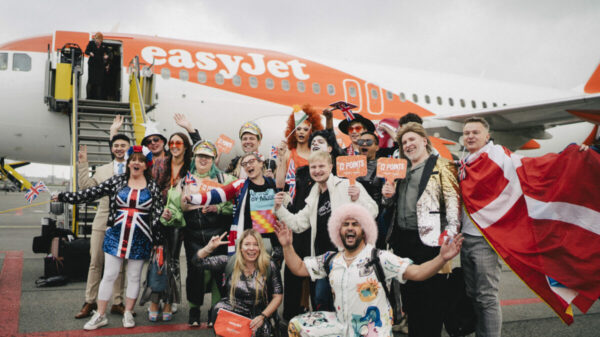Earlier this month, British high-street retailer Wilko announced that it was going into administration, nearly 93 years after it opened its first store.
While the news came as a surprise to shoppers across the UK, Wilko’s downfall didn’t come out of the blue; signs of financial struggle had been clearly visible to those in the industry for some time. But what was less visible were Wilko’s marketing efforts to turn its ailing fortunes around.
Wilko’s recent marketing output has been sparse, with campaigns proving few and far between. Even last year’s Christmas spot (remember it? No, neither did we…) failed to garner substantial attention.
In an era when companies are constantly forced to readjust to accommodate for economic challenges such as the Covid-19 pandemic, international political unrest and an entrenched cost-of-living crisis, effective, memorable marketing has the potential to make the difference between a brand’s survival or demise.
So how much did Wilko’s marketing – or rather, lack of it – contribute to its downfall?
Beyond the brand: why big retailers shouldn’t rely on reputation alone
Marketing coach Danny Denhard emphasises the universal importance of marketing and advertising, irrespective of brand status. Just because consumers know your name, doesn’t mean your marketing goals are complete.
“Marketing and advertising are essential to every company,” Denhard says, “regardless of whether you have deep brand love, the most loyal customers or recently became a cult or trending brand.”
Explaining the importance of creating a “strong standout” factor when appealing to consumers both in-store and online, Denhard points out the repercussions of failure, which can even fell high street giants.
“Big retailers are often connected to big bang campaigns and good tactical PR. I don’t remember Wilko having either for a long time. Many household names started ignoring localised campaigns to drive footfall and push in-store sales.
“However many ads or marketing campaigns you run, you cannot change the weak business model or operational problems behind the scenes, and you will likely just mask any business issues.”
A Wilko case study: marketing missteps
In marketing, an omnichannel approach is crucial – and despite the occasional TV ad, Wilko’s inconsistent approach raised eyebrows.
“I don’t remember the last Wilko advertising campaign I actually saw,” Denhard remarks. “I don’t remember it being covered in the press or having any mention across social media apart from the news cycle when they started to struggle a week or so before closure.”
This, he explains, is the problem many brands and retailers are facing: “We are all in our own personalised feeds and if you lose your relevancy or find it hard to target the right customer and keep customers happy you will lose.”
Pointing to the budget retailer’s competitors, Denhard added: “Supermarkets, local and metro stores and Amazon all competed with Wilko and this combination would test any retailer.
“Many are downsizing and struggling to compete on convenience or with Amazon prime expectations – fair price on any item with super quick delivery you can rely on. Wilko likely had numerous NPS surveys, customer feedback sessions and data points that could have misled them and led them to believe they were doing okay with their marketing and advertising.
“Traffic and footfall could have been high and growing but the sell through likely wasn’t there or there were issues with delivery or in-store stock.”
Denhard also singles out changing consumer habits over the past decade as an important factor, surmising that the ill-fated retailer simply failed to evolve.
“Wilko likely struggled to adapt to the new dominant apps and channels – and to a certain point lost its relevance to a digitally savvy and mobile native audience who weren’t popping into the local town centre or going to the local business park without a reason or just to shop.”
“It potentially lost its utility and convenience in the eyes of many,” he concludes.
Multichannel marketing, effectiveness and survival
Wilko has had two notable TV campaigns over the last decade – its 2014 rebrand from ‘Wilkinson’ to ‘Wilko’ and last year’s Christmas advert. While it isn’t imperative for a brand to have regular TV adverts, for a retailer of Wilko’s size, it is unusual.
Selecting which channels to prioritise can be a tricky dilemma for even the most seasoned marketer, but a combination of multiple mediums and consistency are recommended to keep a brand fresh in the minds of consumers.
The O2’s marketing and brand director, Robbie Balfour also stressed the importance of an integrated, omnichannel marketing plan.
‘My view is that different channels have different roles to play and rather than comparing each to find which is “most effective” it’s better to consider them together,” Balfour said.
“Ultimately, my experience is that a combination of channels, with aligned creative designed specifically for each, provides a ‘better than the sum of parts’ return.”
Denhard agrees, adding: “A mix is the way to go, specific channels will be for trial and error or for super precise targeting.
“For a brand like Wilko, in-store, out-of-home and some super smart digital would have complimented TV or radio. I don’t think there is ever a perfect blend of channels but many traditional brands are leaning heavily into digital over non-digital/traditional and potentially this wasn’t hitting or landing with their customers.”
Effective marketing during times of crisis
“Marketing can either heighten the storm or help brands ride it,” Denhard states, rather cryptically.
A point echoed earlier this year by Heineken marketing director, Michael Gillane who spoke about his company’s fight to bounce back after a period of uncertainty, highlighting how crucial marketing can be for a company’s recovery.
“We’ve made a conscious choice over the last six, seven or eight years to build a broader culture of marketing, [so it is seen] not as the colouring-in department, but as the growth engine.”
This senior management support is something that Denhard suspects Wilko’s marketing department did not have.
“For Wilko and their teams, I suspect there were numerous campaigns debated and likely planned that would have brought their wide range of products, cheap prices and accessibility to the forefront. However, the pressures of being in trouble, slashing marketing budgets and losing headcount would have meant less cash for bigger campaigns and managing internal goals would have been near on impossible.”
Denhard also warns against overestimating the power of marketing to turn round a sinking ship. While acknowledging the uncertainty of advertising, he notes that “many brands now are one viral hit away from potentially doing incredibly well”.
“I suspect a viral moment or a standout product offering or a major saving across items would not have helped Wilko to keep administrators away.”
As yet another high street giant is brought to its knees, Wilko’s story underscores the importance of agile and diversified marketing in the retail sector – where a strong marketing anchor can help navigate even the harshest of storms.









